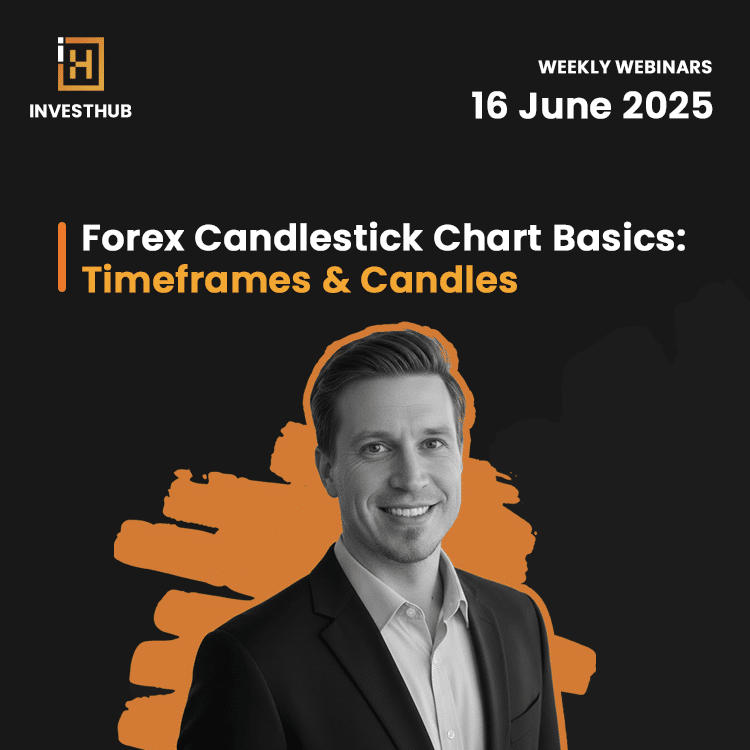Forex Candlestick Chart Basics: Timeframes & Candles

This event has expired
Quick Overview
A forex candlestick plots the open, high, low and close (OHLC) for a chosen period, turning raw numbers into an instantly readable graphic of market emotion.
Because each candle’s shape changes with the timeframe you pick—from one-minute scalps to monthly trend bars—the first step to any facts-based chart study is understanding how those periods stack and compress price data.
This 60-minute, FSCA-compliant session explains candlestick structure and timeframe logic without offering trading signals or advice, keeping us firmly inside FAIS “factual-information” territory (fsca.co.za).
What You’ll Learn
- Candle anatomy — bodies, real-bodies and wicks, and how OHLC feeds each part
- Timeframe hierarchy — why traders zoom from M1 up to MN to filter noise or confirm bias
- Wick length & volatility clues — long shadows often mark liquidity grabs or failed breakouts (tradersmastermind.com).
- Session overlaps — typical Asian, London and New York candle profiles during the peak-volume overlap windows.
- Live MT4 demo — switching timeframes, saving templates and exporting screenshots (zero strategy discussion).
Why It Matters
Reading candlesticks accurately lets traders verify facts—such as gap size or volatility spikes—without relying on third-party commentary (futures.stonex.com). Solid knowledge of timeframe compression also helps you spot when a daily doji is just an intraday range on the five-minute chart (questdb.com).
Speaker
Brandon Lurie — professional trader, analyst and RE 5 candidate who specializes in chart interpretation within FSCA boundaries (factual education, no personalised advice).
Extra Resources
- Investopedia beginner’s guide to candlesticks (investopedia.com)
- IG Academy article on choosing forex timeframes (ig.com)
- FSCA bulletin: “What constitutes advice?” (PDF) (fsca.co.za)
- Explore our full FSCA-Compliant Webinar Library for more topics.
Disclaimer: This webinar provides general, factual information and does not constitute financial advice as defined in the FAIS Act. Margin trading carries risk. Always consult a licensed FSP before acting on factual data presented.
